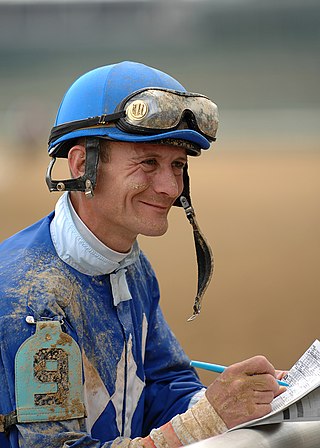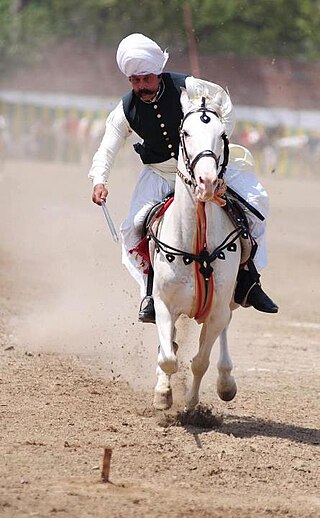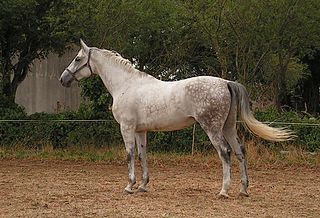
Equestrianism, commonly known as horse riding or horseback riding, includes the disciplines of riding, driving, and vaulting. This broad description includes the use of horses for practical working purposes, transportation, recreational activities, artistic or cultural exercises, and competitive sport.

A horse show is a judged exhibition of horses and ponies. Many different horse breeds and equestrian disciplines hold competitions worldwide, from local to the international levels. Most horse shows run from one to three days, sometimes longer for major, all-breed events or national and international championships in a given discipline or breed. Most shows consist of a series of different performances, called classes, wherein a group of horses with similar training or characteristics compete against one another for awards and, often, prize money.
The International Federation for Equestrian Sports is the international governing body of equestrian sports.

The Australian Professional Rodeo Association (APRA) is the national governing body for professional rodeo in Australia. Founded in 1944, APRA has been setting the standards for rodeo in Australia for over 60 years. The Australian Rodeo consists of many events some of which are junior and ladies' (open) barrel racing, saddle bronc riding, bull riding, bareback bronc riding, rope and tie, steer wrestling, team roping and the steer ride. Men, women and children are involved in the Australian rodeo circuit.

Equestrian vaulting, or simply vaulting, is most often described as gymnastics and dance on horseback, which can be practiced both competitively or non-competitively. Vaulting has a history as an equestrian act at circuses, but its origins stretch back at least two-thousand years. It is open to both men and women and is one of ten equestrian disciplines recognized by the International Federation for Equestrian Sports. Therapeutic or interactive vaulting is also used as an activity for children and adults who may have balance, attention, gross motor skill or social deficits.
The United States Equestrian Federation is the national governing body for most equestrian sports in the United States. It began on January 20, 1917, as the Association of American Horse Shows, later changed to the American Horse Shows Association (AHSA). In 2001, the organization changed its name to USA Equestrian (USAE) and, in 2003 it merged with the United States Equestrian Team (USET). In 2017, USEF rebranded as US Equestrian. In 2019, USEF outsourced its laboratory services to the University of Kentucky.

An equestrian helmet is a form of protective headgear worn when riding horses. This type of helmet is specially designed to protect the rider's head in the event of falls from a horse, especially from striking a hard object while falling or being accidentally struck in the head by a horse's hoof.

Tent pegging is a cavalry sport of ancient origin, and is one of only ten equestrian disciplines officially recognised by the International Equestrian Federation. Used narrowly, the term refers to a specific mounted game with ground targets. More broadly, it refers to the entire class of mounted cavalry games involving pointed and edged weapons on horseback, for which the term "equestrian skill-at-arms" is also used.

A sport horse or sporthorse is a type of horse, rather than any particular breed. The term is usually applied to horses bred for the traditional Olympic equestrian sporting events of dressage, eventing, show jumping, and combined driving, but the precise definition varies. In the United States, horses used in hunt seat and show hunter competition are often classed as sport horses, whereas the British show hunter is classified as a "show horse."

English riding is a form of horse riding seen throughout the world. There are many variations, but all feature a flat English saddle without the deep seat, high cantle or saddle horn that are part of a Western saddle nor the knee pads seen on an Australian Stock Saddle. Saddles within the various English disciplines are all designed to allow the horse the freedom to move in the optimal manner for a given task, ranging from classical dressage to horse racing. English bridles also vary in style based on discipline, but most feature some type of cavesson noseband as well as closed reins, buckled together at the ends, that prevents them from dropping on the ground if a rider becomes unseated. Clothing for riders in competition is usually based on traditional needs from which a specific style of riding developed, but most standards require, as a minimum, boots; breeches or jodhpurs; a shirt with some form of tie or stock; a hat, cap, or equestrian helmet; and a jacket.
Equestrian Canada, formerly known as Equine Canada and commonly known by its acronym, EC, is Canada’s comprehensive national governing body for equestrian sport. It is the executive branch of Canada's Olympic and Paralympic equestrian teams; the national association and registry of Canadian equestrian athletes; the national regulatory body for equestrian coaches, competition organizers, and judges; and the national federation of Canadian horse breeders and Canadian breed registries.
British Equestrian, founded 1972 is the national governing body of equestrian sport in Great Britain and represents the country at the International Federation for Equestrian Sports. Her Majesty The Queen is the organisation's Patron.

Patrik Kittel is a Swedish horse rider. He was born in Stockholm. He competed at the 2008 Summer Olympics in Beijing, where he placed fourth in team dressage. At the 2012 Summer Olympics he competed in the team dressage events and qualified for the Grand Prix Special and Grand Prix Freestyle, finishing 14th.
Para-equestrian is an equestrian sport governed by the International Federation for Equestrian Sports (FEI), and includes two competitive events: One is para-equestrian dressage, which is conducted under the same basic rules as conventional dressage, but with riders divided into different competition grades based on their functional abilities. The other is para-equestrian driving, which operates under the same basic rules as combined driving but places competitors in various grades based on their functional abilities.

Lisa Martin is an Australian para-equestrian. She represented Australia at the 2016 Rio Paralympics.

The Equitation School is a centre of excellence of the Defence Forces dedicated to competing at the highest level of international equestrian competition. It is based at McKee Barracks in the Phoenix Park in Dublin.

South African Equestrian Federation (SAEF) is the national governing body for majority of equestrian sports in South Africa. These sports include the FEI-recognized disciplines of dressage, eventing, show jumping, vaulting, endurance, reining, para-equestrian, and driving, with the non-FEI discipline of tentpegging. SAEF also develops and enforces the rules for other events at horse shows.
The German Equestrian Federation(Deutsche Reiterliche Vereinigung) is an umbrella organization in Germany for equestrian sports and breeding. It is the governing body for the majority of equestrian sports and their organization in Germany, including FEI-recognized disciplines of dressage, eventing, show jumping, vaulting, endurance, reining, para-equestrian, and driving. It also develops and enforces the rules for other events at horse shows. It is colloquially known as FN, short for the international term Fédération Équestre Nationale. The organisation runs the FNverlag, a publishing house for related books and other media

The Equestrian Federation of India (EFI) is the governing body for equestrian sports in India.













